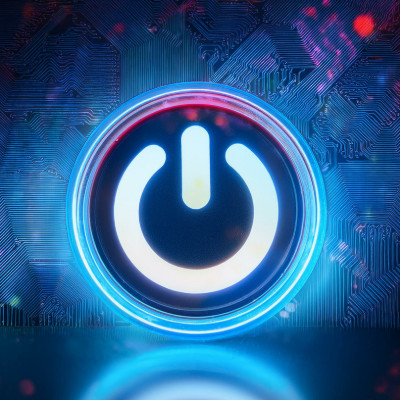Business owners have a lot of duties and responsibilities, and while you can hire a lot of people to cover some of the more stressful ones, it might feel strange to outsource your company’s technology management. You know IT is important, so that’s why you feel like you have to do it yourself, or at least in-house, but in reality, you’re the last person who should be working with your technology—and we’ll explain why.
CIT Solutions Blog
Your business wants to use every opportunity it can to increase its bottom line and eliminate unnecessary costs, but how often does printing enter into the conversation? You waste more paper, ink, and toner than you think by not keeping a close watch on your printing practices. The right technology can not only reduce these wasteful practices but eliminate them entirely, giving you more capital to invest elsewhere in your business.
There’s a reason why we tend to focus on security, and that’s because it’s not a matter of if you experience a cyberattack, but when. It’s your responsibility to make sure that you’re ready to act in the right way when faced with these attacks. One of the best ways you can be prepared is by working with a managed service provider like us. Today, we have three ways we, as a managed service provider, can help you take the fight to cybersecurity threats.
As necessary as it is, business technology tends to be expensive, especially when things go wrong. Historically, these costs took the form of capital expenditures, which meant they were inherently expensive and unpredictable by nature.
This is precisely why it is so important to shift your business IT to an operating expense. Let’s explore why this is the case and how to implement this change.
Proactive IT is something we harp on a lot, and that’s because it works… especially compared to the alternatives. However, what does proactive IT mean, and how can you get the most out of your business technology?
Perhaps more importantly, how can you make sure your technology doesn’t become a liability rather than an asset?
Productivity is one of the most common business goals today, with many doing everything they can to optimize it. In fact, today is officially World Productivity Day, highlighting the significant importance placed on this specific metric.
Despite this, productivity can often feel unattainable… regardless of how busy one is throughout the day. Let’s fix that and consider three habits that will greatly support your work and help make the most of your time.
As a business owner, you wear many hats. You're the CEO, the head of sales, the marketing guru, and often, the de facto IT department. It's understandable that with so much to do, dealing with a sluggish computer or a temperamental software program gets pushed to the bottom of the to-do list. A laissez-faire attitude towards your technology can have serious consequences, however. Today, we’ll go through why being lazy with your IT causes more harm than good.
You see it everywhere, again and again: how much return an investment into proper business technology will bring, with little to no context behind these claims. We want to fix that.
Let’s examine why so much information about modern IT options can be less than helpful, and see if we can’t clarify what it means. Simplifying tech for the businesses we work with is one of our primary goals, after all.
While it’s the longest-running joke in the world of IT, the question “Have you tried turning it on and off again?” is still an important one to consider when things are going awry. There’s a good reason why it’s such well-known advice, too: turning your device off can help solve a significant amount of technical issues. Why is this the case, and what can you learn from it?
We’ve all heard it, perhaps even rolled our eyes at it: “Have you tried turning it off and on again?” This seemingly simplistic question has become a running gag in the world of IT support. But beneath the humor lies a fundamental truth: rebooting a device is often the most effective first step in resolving a surprising number of technical glitches.
We understand that, although it might sound elementary, this advice is based on solid technical principles.
When your business’ data is so crucial to your successful operations, there are certain precautions that you simply need to take for the sake of your business’ longevity. One such precaution: data backup.
Your data is the gas that powers your business’ engine, whether you’re referring to project files and intellectual property or financial info and customer records. As such, imagine what it would mean if your business ran out of gas… or, more accurately, it was siphoned out.
We’re sure your business has at least a couple of employees who spend part of their workday in a different location, but are you doing all you can to help them be as productive as possible? While remote work is beneficial in so many circumstances, there are a lot of caveats to it that must be considered. Today, we want to go over how you can mitigate risk and keep remote work from becoming a liability for your company.
Hardware is far from the most fun topic for a business owner to learn more about, but that doesn’t diminish its importance. If you want to ensure your business stays ahead of the game, then you need to be strategic about your hardware implementation. Otherwise, you risk falling behind, put your business in danger, and—even worse—imperil your budget. Today, we want to help you get the most out of your hardware, long before you have to invest in anything new.
Nowadays, the average business leans pretty heavily on mobile devices to some degree, particularly as they make business productivity—and thereby, competitiveness—more easily attainable. However, this also makes it essential that a business using mobile devices has a means of managing them effectively.
Let’s explore the concept of mobile device management, and discuss some ways that your business can take advantage of it.
As you should be aware by this point, the Windows 10 operating system is reaching its end of support on October 15 of this year—meaning that it will no longer receive updates of any kind afterward, including critical security updates. What you may not know, however, is that Microsoft is following suit and pulling Office support around the same time.




















